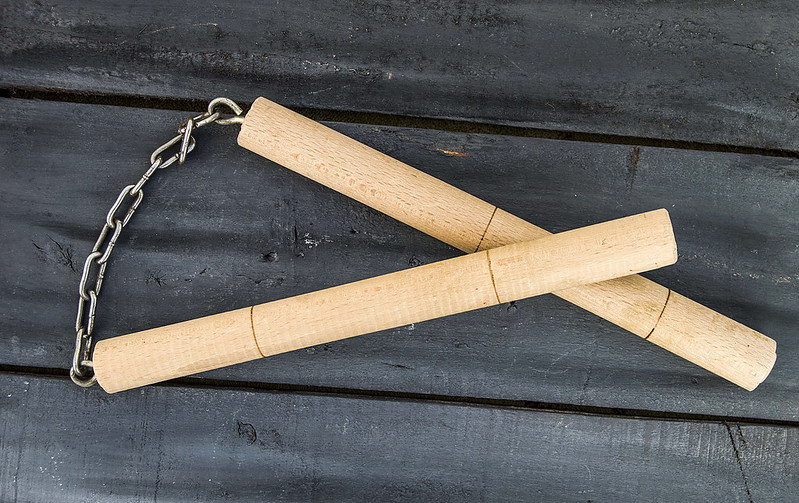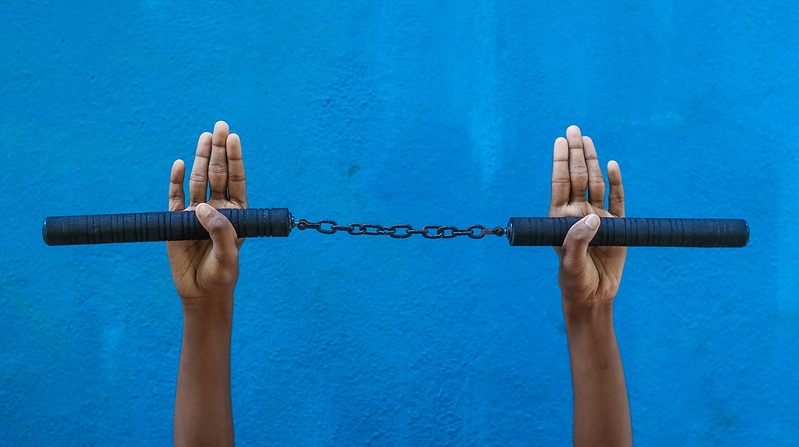
Origins of the Nunchaku
The Nunchaku (ヌンチャク), also known as “nunchuk”, “nunchuck”, or “chainstick”, is a traditional Japanese weapon originally developed in Okinawa. The Nunchaku consists of two sticks linked together by a short chain or rope. In more modern times, the nunchaku was popularized by the martial arts icon Bruce Lee. It is widely used in karate and the Okinawan kobudō martial arts. Nunchaku is considered a great training weapon that develops quicker movements and improves posture.
The term nunchaku is from the Japanese Ryukyuan languages. The word itself was derived from a short Southeast Asian agricultural tool used for threshing rice or soybeans.
When Japanese warlords invaded Okinawa, they banned the use other conventional weapons. As a result, Okinawans learned kobudo and karate. Kobudo weaponry were farming tools that farmers converted into things they could use to defend themselves. Another belief is that the nunchaku was from the wooden clapper called hyoshiki. It was made of two blocks of wood joined by a cord and used by village watchmen. It was used to make noises to warn villagers of impending fires and other dangers. It is also said that nunchuks were developed from bits used for Okinawan horses.
There are many varieties of nunchakus but they are primarily made of two sections of wood connected by either a chain (kusari) or a cord (himo). Okinawan nunchakus have an octagonal cross-section that increases the force of contact on one end of the weapon, while the Chinese version is more rounded. Ideally, the pieces of wood should be long enough to protect the forearm when the nunchucks are held high at the top of the shaft. There are asymmetrical nunchuks, but typically both sticks should be of the same length. The chain or rope holding the two sticks together should be long enough to allow the user to lay the weapon over the palm of the hand with both sticks perpendicular to the ground and hanging comfortably. The pieces of wood should be perfectly balanced to be able to execute the techniques used with the nunchaku.
